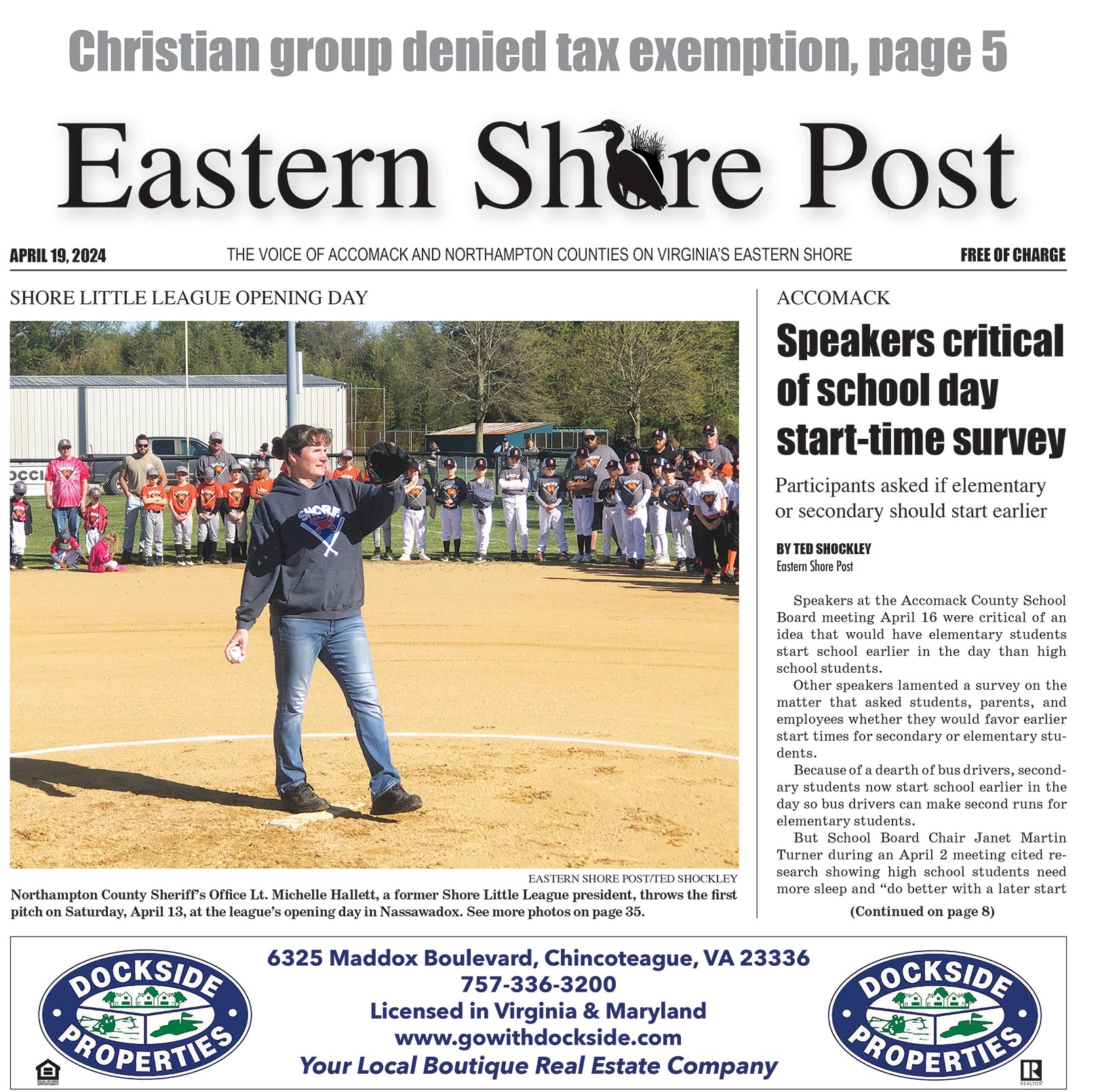By Linda Cicoira
The U.S. Army Corps of Engineers posted a notice Monday soliciting public comment regarding the proposed dredging and excavating in the ocean at Wallops Island aimed at reducing potential storm damage or loss to assets of the NASA Wallops Flight Facility, the Navy, and the Mid-Atlantic Regional Spaceport.
The applicant, NASA, proposes to use “dredge material to nourish the shoreline.” Six rubble mound break-waters would be installed to restore the shoreline to pre-Hurricane Sandy conditions. “Restoration is necessary as the existing seawall is being undermined due to little or no protective sand beach remaining in the proposed work area,” the notice stated.
An estimated 1.3 million cubic yards of sand would be placed along about 19,850 feet of shoreline. “The beach fill material will come from excavating and performing minor dredging at the north Wallops Island beach.”
The proposal involves dredging 37,515 cubic yards of sand from the north-end of Wallops Island and would impact 31 acres of land seaward of mean high water, the notice continued. This and material excavated from uplands will be used to re-nourish. About 140 acres of subaqueous bottom seaward of mean high water will be involved. The breakwaters would be placed seaward of mean low water and would impact 1.64 acres of subaqueous bot-tom. “No mitigation is proposed for the impacts to subaqueous bottom.”
A pan excavator would remove sand from about “200 acres of the beach to the mean low water line. The average excavation depth is 2.35 feet. Sand will be stockpiled and then loaded onto dump trucks for transport on existing roads to the southern end of the island. Bulldozers will be used to spread the fill material once it is placed on the beach. All heavy equipment will access the beach from existing roads and established access points. No new temporary or permanent roads will be constructed to access the beach or to transport the fill material to re-nourishment areas.”
The beach fill will start about 1,500 feet north of the Wallops Island-Assawoman Island boundary and extend north for about 3.7 miles, the notice continued. The initial fill will form a 6-foot-high berm extending a mini-mum of 70 feet seaward of the existing seawall. The remaining fill will slope seaward with varying distances.
The breakwaters would be constructed in two equal sets about 200 feet offshore from the mean high water line of the re-nourished beach … Each breakwater will be constructed of VDOT-type I armor stone for the outer layer and Class II Stone for the core. The stone would be placed parallel to the shore and will measure approximately 130 feet long and 10 feet wide at top crest elevation. The breakwaters will be placed approximately 100 feet apart. Water depths in these areas are approximately 4 to 8 feet. The southernmost breakwaters will be constructed about 4,000 feet north of the southern extent of beach nourishment. The second breakwaters will be put about 10,000 feet north of the southern extent of beach nourishment. The rocks for would be brought to the Wallops Flight Facility by rail and then trucked to the site. It would then be loaded onto barges and placed.
American beach grass would be planted at 18-inch intervals over the reestablished dune between Oct. 1 and March 31.
A hearing could be requested. A preliminary review indicates “no environmental impact statement will be required.” But NASA consulted the U.S. Fish and Wildlife Service regarding potential effects on Endangered Species Act listed birds and sea turtles that could be affected by the project and the two agencies “developed … mitigation measures to reduce the probability and intensity of potential effects.”
They propose no work will be con-ducted in the borrow area at the north end of the island during plover or turtle nesting from April to September. NASA would employ a biological monitor to survey the project site on a daily basis should work occur during those months and promised to educate all workers in the construction area on recognizing protected species and their habitat. From March to September NASA surveys the island for plover, red knot and sea turtle activity as part of its Natural Resources Management Program. “Any nests discovered are identified” with signs. Staff “provide outreach to beach users, including security staff and recreational users.”
NASA also consulted with Virginia Department of Historic Resources regarding the project. “The inadvertent discovery of any previously unidentified archaeological resources would result in immediate cessation of work and notification of the Wallops Flight Facility Cultural Resources Manager.” NASA also consulted with NOAA regarding potential effects on listed marine mammals, fish, and in-water sea turtles.
Written comments may be sent to [email protected], or to Norfolk District, Corps of Engineers (ATTN: CENAO-WR-R), 803 Front Street, Norfolk, VA 23510-1011. The deadline is Dec. 26.
Sign in
Welcome! Log into your account
Forgot your password? Get help
Password recovery
Recover your password
A password will be e-mailed to you.



